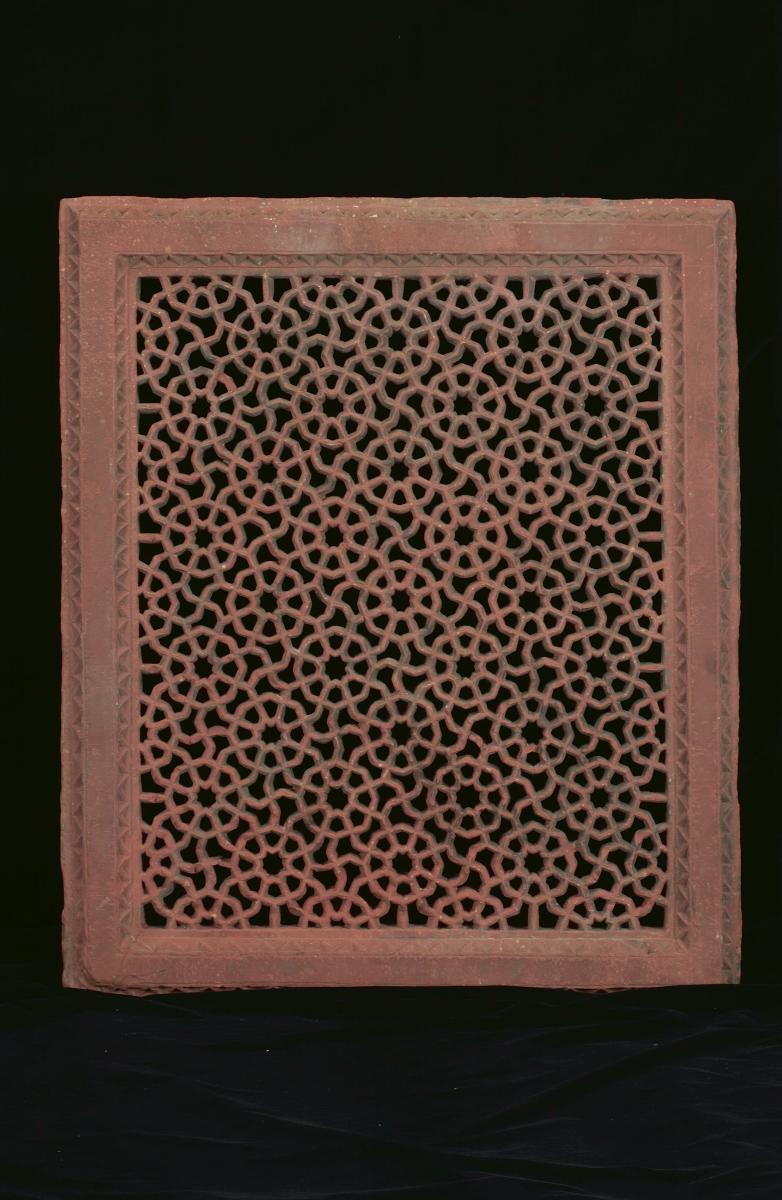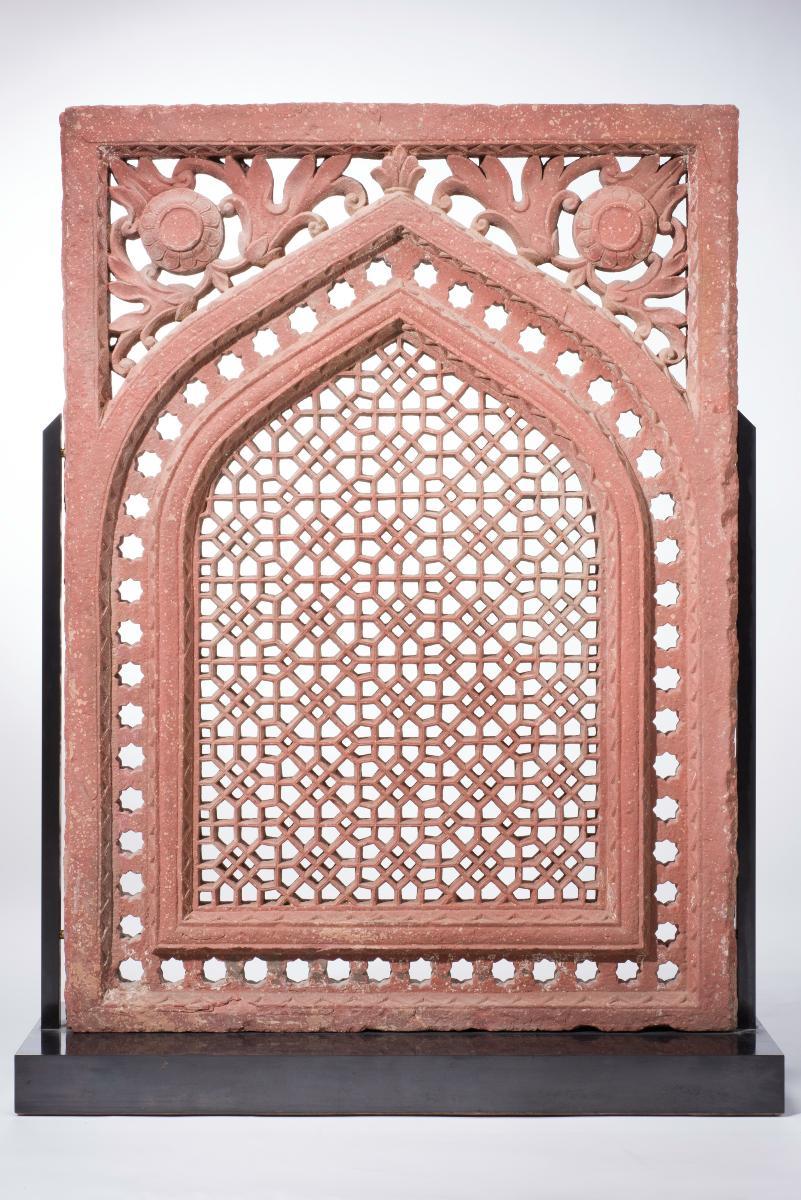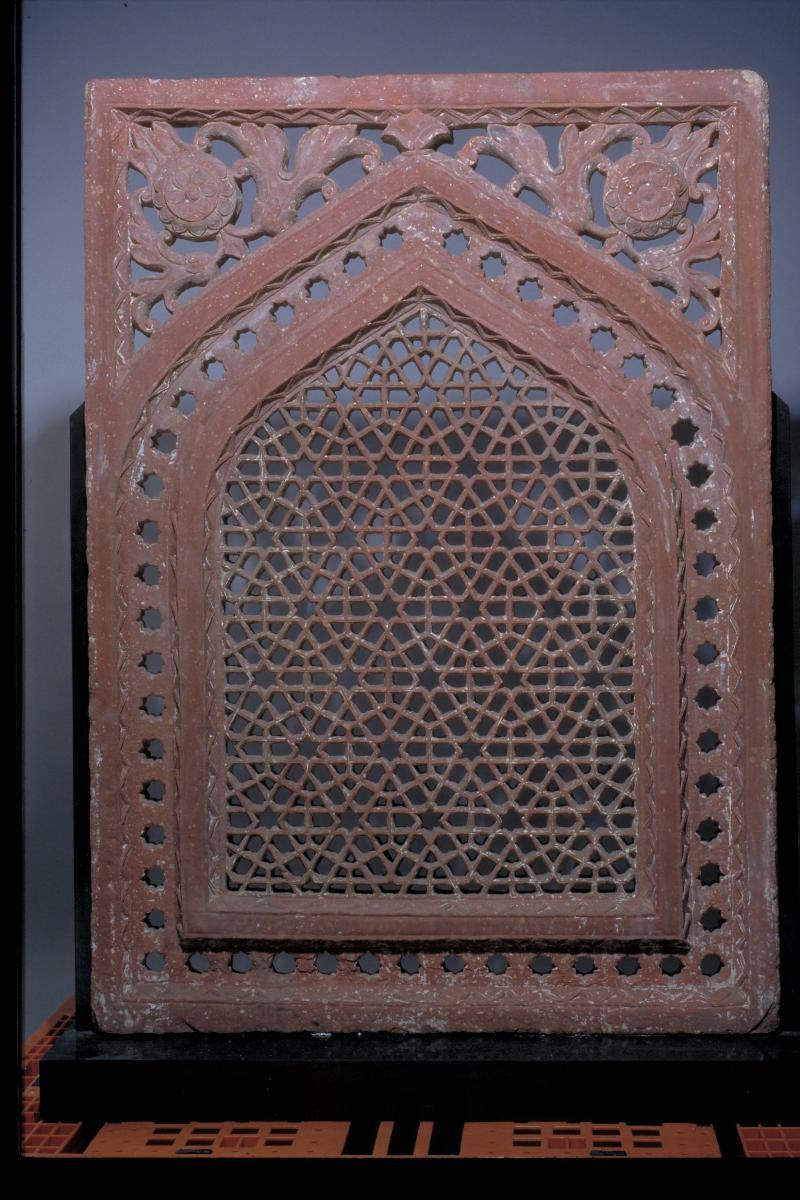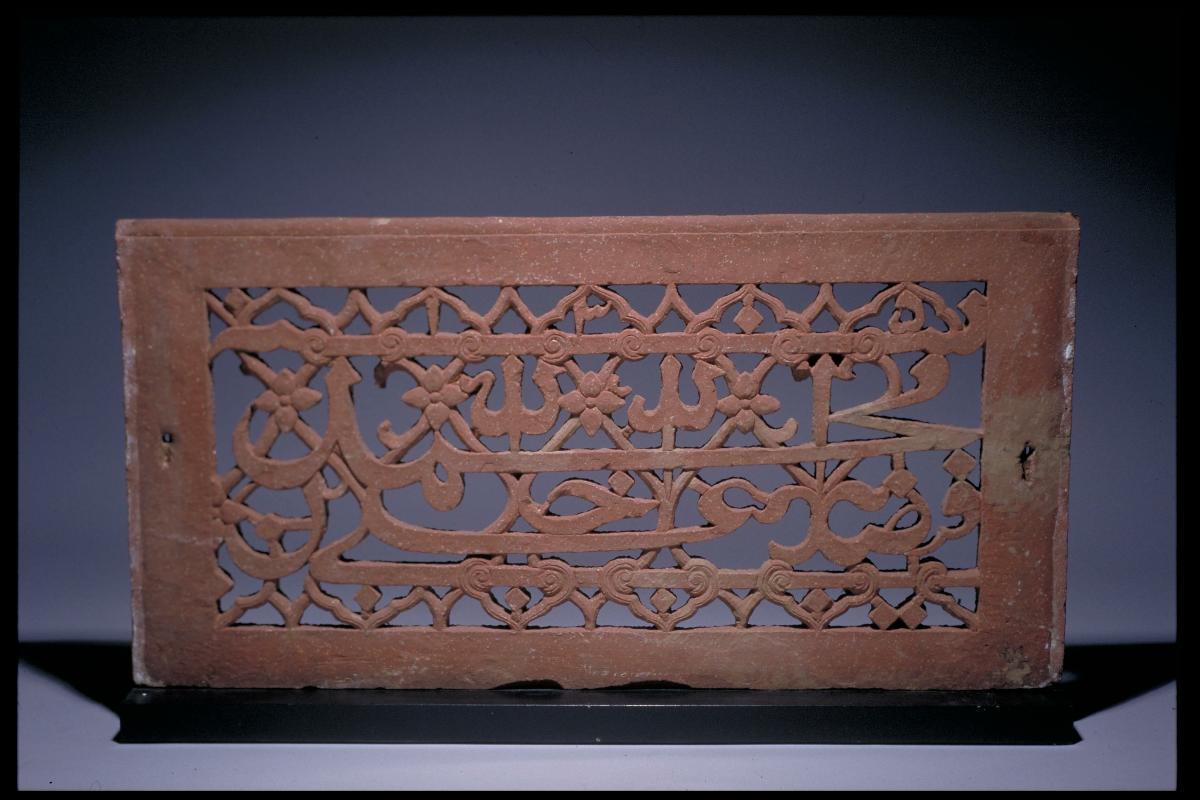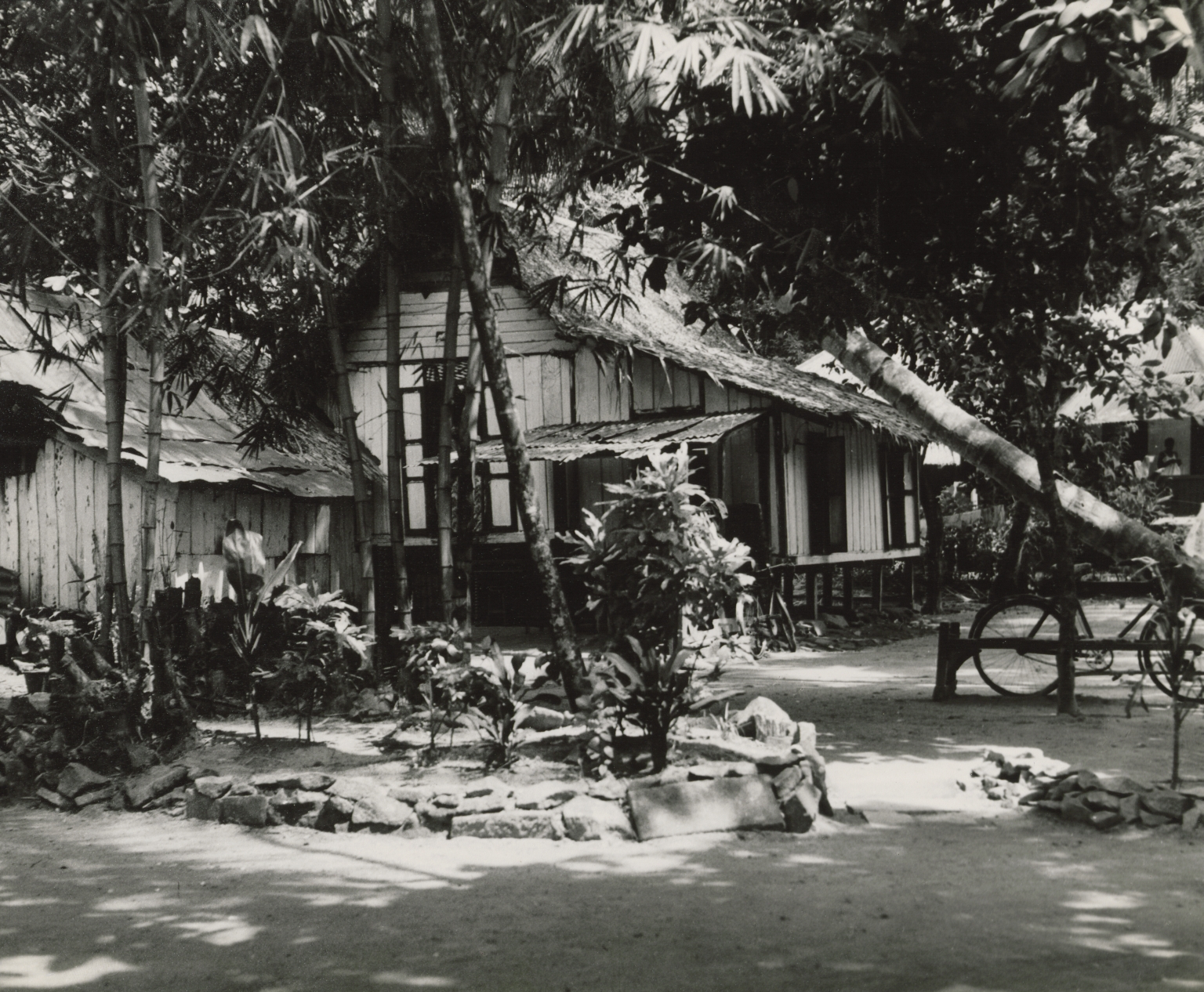This Mughal sandstone 'jali' (lattice work) screen has a complex interwoven design of octagonal flowers. Jali was widely used as screens for windows in Mughal architecture.They also had other functions besides providing light and air. In Indian tradition, lattice windows were carved out of both wood and stone and carved decorative motifs held symbolic meanings. From the earliest times, the use of perforated windows was pervalent in north and south India.Islamic buildings usually employed geometric patterns while Hindu, Jain and Buddhist craftsmen varied figural, vegetal, symbolic and geometric designs. Elaborate patterns on Islamic monuments reveal an interest in embellishment intensified by the mathematical pursuit of precision.Mughal and Mughal-inspired jali also assimilated indegenous patterns and regional influences in the refinement of the designs, making their carvings very delicate.





